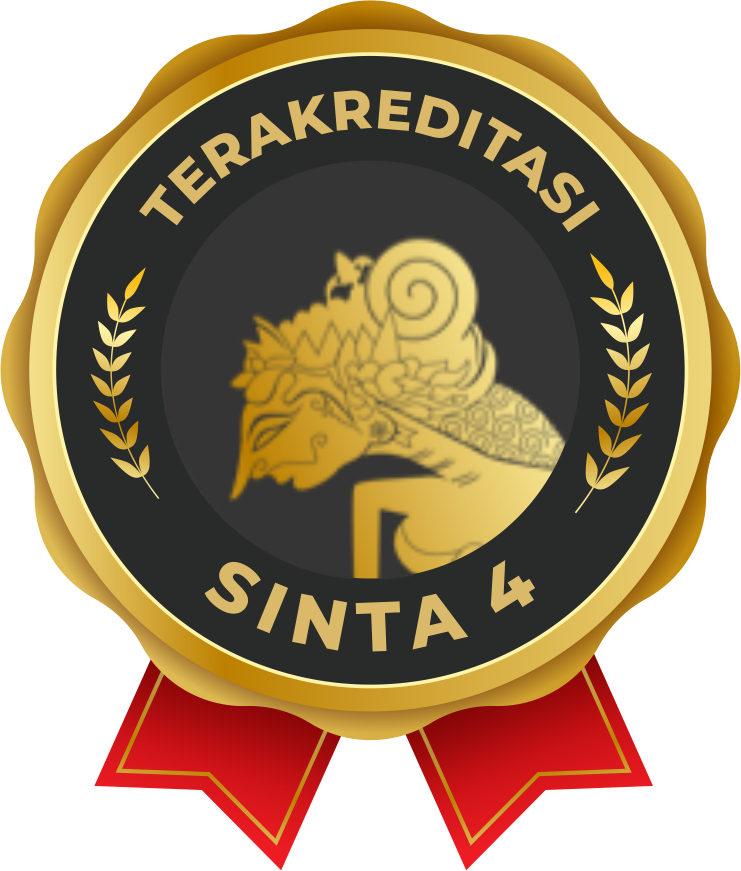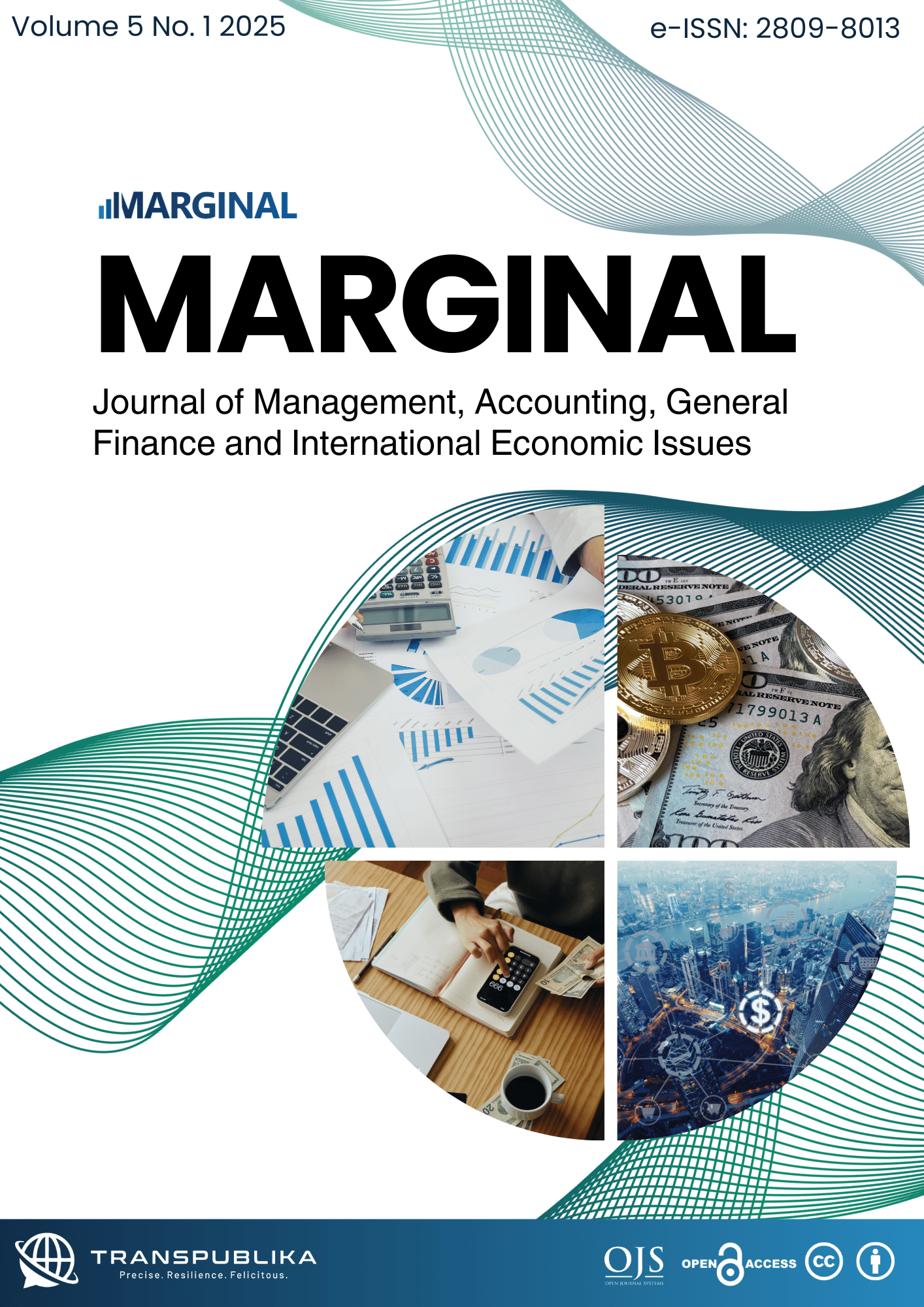Accounting Review of Recording of Joper Chicken Inventory as a Biological Asset Based on PSAK 69
Main Article Content
Dara Nida Utamie*
Puja Fitratunnisa
Small-scale poultry farmers like CV Almarn Ligurbar Farm typically do not classify chickens as biological assets in accordance with PSAK 69. This results in financial statements inaccurately reflecting their actual economic worth. This study aims to analyze the method of recording chicken inventory that meets the PSAK 69 standards regarding biological assets, analyzing the differences between the recording practices carried out and the standards set out in PSAK 69. PSAK 69 requires the measurement of biological assets using fair value less costs to sell. This study was conducted on small-scale chicken farmers, namely CV Almarn Ligurbar Farm. This study uses a descriptive qualitative approach with a case study method. The results of the study indicate that farmers have not fully implemented PSAK 69 due to limitations in understanding accounting standards, lack of financial records, and uncertainty in market prices. Recording is not carried out as chickens as biological assets during their growth period at CV Almarn Ligurbarn Farm, which has a significant impact on the validity and reliability of the resulting financial statements. Based on PSAK 69, chickens in the care process including the initial, intermediate, and pre-harvest phases are recognized as active biological assets that experience changes in both quantity and quality, so they should be recognized and valued in accounting. However, the reality in the field indicates that these chickens are seen only as part of the production process, without official recognition as assets in the statement of financial position.
Alfiani, L. K., & Rahmawati, E. (2019). Pengaruh Biological Asset Intensity, Ukuran Perusahaan, Pertumbuhan Perusahaan, Konsentrasi Kepemilikan Manajerial, dan Jenis KAP Terhadap Pengungkpan Aset Biologis (Pada Perusahaan Agrikultur yang Terdaftar di Bursa Efek Indonesia Periode 2014-2017). Reviu Akuntansi Dan Bisnis Indonesia, 3(2). https://doi.org/10.18196/rab.030243
Assyakurrohim, D., Ikhram, D., Sirodj, R. A., & Afgani, M. W. (2022). Metode Studi Kasus dalam Penelitian Kualitatif. Jurnal Pendidikan Sains Dan Komputer, 3(01), 1–9. https://doi.org/10.47709/jpsk.v3i01.1951
Azzahra, V., Luthan, E., & Fontanella, A. (2020). Determinan Pengungkapan Aset Biologis (Studi Empiris pada Perusahaan Agriculture yang Terdaftar di Bursa Efek Indonesia. Ekonomis: Journal of Economics and Business, 4(1), 230. https://doi.org/10.33087/ekonomis.v4i1.114
Bova, F. (2016). Discussion of Accounting for Biological Assets and the Cost of Debt. Journal of International Accounting Research, 15(2), 49–51. https://doi.org/10.2308/jiar-51415
Dimitrova, I., & Velcheva, Y. (2016). Fixed Biological Assets-Specifics Of Their Reporting And Related Problems. Economic Archive/Narodnostopanski Arhiv, 3.
Ermawijaya, M., & Endang, E. (2025). Analisis Penerapan Perhitungan Aset Biologis Berdasarkan PSAK 16 dan PSAK 69 (Studi Kasus pada PT. Mura Bibit Lestari Musi Rawas). Jurnal Ilmiah Akuntansi Rahmaniyah, 8(1), 20. https://doi.org/10.51877/jiar.v8i1.391
Fitriyani, F., Leniwati, D., Juanda, A., & Mawardi, F. D. (2025). Analisis Aset Biologis Untuk Keberlanjutan Usaha Pertanian Bawang Merah Berdasarkan PSAK 69. Jurnal Akuntansi Bisnis Dan Ekonomi, 11(1), 1–10. https://doi.org/10.33197/jabe.vol11.iss1.2025.2308
Hutagalung, J. F. (2023). Penerapan Akuntansi Aset Biologis Berdasarkan Pernyataan Standar Akuntansi Keuangan (PSAK) No. 69 Pada PT Perkebunan Nusantara III (Persero) Medan. Repository UHN.
Hütten, C., & Sessar, C. (2011). International Accounting Standards Board (IASB). Oldenbourg.
IFRS Foundation. (2018). Conceptual Framework for Financial Reporting. IFRS Foundation.
Ikatan Akuntan Indonesia. (2015). Standar Akuntansi Keuangan. Dewan Standar Akuntansi Keuangan Ikatan Akuntan Indonesia.
Jao, R., Tangke, P., Holly, A., & Belinda, B. (2023). Determinan Pengungkapan Aset Biologis Serta Dampaknya Terhadap Kinerja Keuangan. Jurnal Akuntansi Manado (JAIM), 196–224. https://doi.org/10.53682/jaim.vi.6387
Kodriyah, K., & Monica, V. (2021). Perbandingan Asset Biologis Berdasarkan IAS 41 Agriculture dan PSAK 16 Aset Tetap. Management & Accounting Expose, 1(1), 63–71. https://doi.org/10.36441/mae.v1i1.83
Mirović, V., Milenković, N., Jakšić, D., Mijić, K., Andrašić, J., & Kalaš, B. (2019). Quality of biological assets disclosures of agricultural companies according to international accounting regulation. Custos e Agronegocio, 15(4), 43–58.
Mutmainnah, Hikmah, S., Zahro, F., & Hendra, R. (2025). Penerapan Psak 69 Dalam Akuntansi Aset Biologis Pada Tanaman Tebu: Studi Kasus PT SGN PG Semboro. Menulis: Jurnal Penelitian Nusantara, 1(3 SE-Articles), 320–325. https://doi.org/10.59435/menulis.v1i3.114
Nuraini, I., & Syah, S. (2025). Akurasi Penilaian Aset Biologis : Sebuah Pendekatan Studi Kasus Eksploratif. Jurnal Penelitian Teori & Terapan Akuntansi (PETA), 10(1), 46–74. https://doi.org/10.51289/peta.v10i1.846
Nurhayati, N., Apriyanto, A., Ahsan, J., & Hidayah, N. (2024). Metodologi Penelitian Kualitatif: Teori dan Praktik. PT. Sonpedia Publishing Indonesia.
Nurlita, H. E., Vitasari, E. N., & Awalina, P. (2024). Penerapan Akuntansi Aset Biologis Berdasarkan Pernyataan Standar Akuntansi Keuangan (PSAK) No. 69 pada Petani Tebu di Wates Dusun Turi Kabupaten Kediri. AKSIME : Jurnal Pengabdian Masyarakat Bidang Akuntansi, Manajemen & Ekonomi, 1(3). https://doi.org/10.32503/aksime.v1i3.5971
Prasetyaning, H. P., Arsita, A. P., Anggarani, D., Wahyudi, U., & Bahri, S. (2023). Analisis Pernyataan Standar Akuntansi Keuangan (PSAK) No.69 Terhadap Aset Biologis Pada PT. Harta Mulia Kabupaten Blitar. Jurnal Akuntansi STIE Muhammadiyah Palopo, 9(1), 57. https://doi.org/10.35906/jurakun.v9i1.1297
Putri, I. A. K., Awwalin, I. N., & Syaipudin, L. (2024). Analisis Kepatuhan Perusahaan dalam Penerapan PSAK No 16 Akuntansi Aset Tetap pada CV Wijaya Kusuma Tulungagung. Jurnal Ilmiah Akuntansi Publik, Manajemen Dan Perbankan, 1(1 SE-Articles), 22–30. https://jiapmp.hellowpustaka.id/index.php/i/article/view/3
Riski, T., Probowulan, D., & Murwanti, R. (2019). Dampak Ukuran Perusahaan, Konsentrasi Kepemilikan dan Profitabilitas Terhadap Pengungkapan Aset Biologis. Jurnal Ilmu Sosial Dan Humaniora, 8(1), 60. https://doi.org/10.23887/jish-undiksha.v8i1.21355
Scott, W. R. (2011). Financial Accounting Theory. Pearson Canada.
Septianah, R., Aprilani, T. L., Fathurrahman, F., & Utamie, D. N. (2025). Pengembangan Usaha Umkm Lokal Terhadap Pengelolaan Keuangan Melalui Konsep Akuntansi. Jurnal Kompetitif, 11(1), 23–30. https://doi.org/10.47885/kompetitif.v11i1.38
Suryaningrum, D. A. (2023). Analisis Penerapan Akuntansi Aset Biologis Berdasarkan Pernyataan Standar Akuntansi Keuangan (PSAK) 69 Tentang Agrikultur di PT. Perkebunan Nusantara VI. Repo Politeknik LPP Yogyakarta.
Triyani, W., Mahmudi, B., & Rosyid, A. (2018). Pengaruh Pertumbuhan Aset Terhadap Nilai Perusahaan Dengan Profitabilitas Sebagai Variabel Intervening (Studi Empiris Perusahaan Sektor Pertambangan yang terdaftar Di Bursa Efek Indonesia Periode 2007 - 2016). Tirtayasa Ekonomika, 13(1), 107. https://doi.org/10.35448/jte.v13i1.4213
Utami, E. R., & Prabaswara, A. (2020). The Role of Biological Asset Disclosure and Biological Asset Intensity in Influencing Firm Performance. Journal of Accounting and Investment, 21(3). https://doi.org/10.18196/jai.2103163
Utamie, D. N. (2022). Transaksi Derivatif Lindung Nilai (Hedging) Pada Bank BUMN. Nusantara Hasana Journal, 1(9), 70–77. https://nusantarahasanajournal.com/index.php/nhj/article/view/235
Utamie, D. N. (2025). Pengelolaan Modal Usaha Dan Penjualan Kredit Barang Dengan Prinsip Qardhul Hasan. Jurnal Ilmiah Manajemen, Ekonomi, & Akuntansi (MEA), 9(2), 1499–1510. https://doi.org/10.31955/mea.v9i2.5597
Yurniwati, Y., Djunid, A., & Amelia, F. (2018). Effect of Biological Asset Intensity, Company Size, Ownership Concentration, and Type Firm against Biological Assets. The Indonesian Journal of Accounting Research, 21(1). https://doi.org/10.33312/ijar.338




















